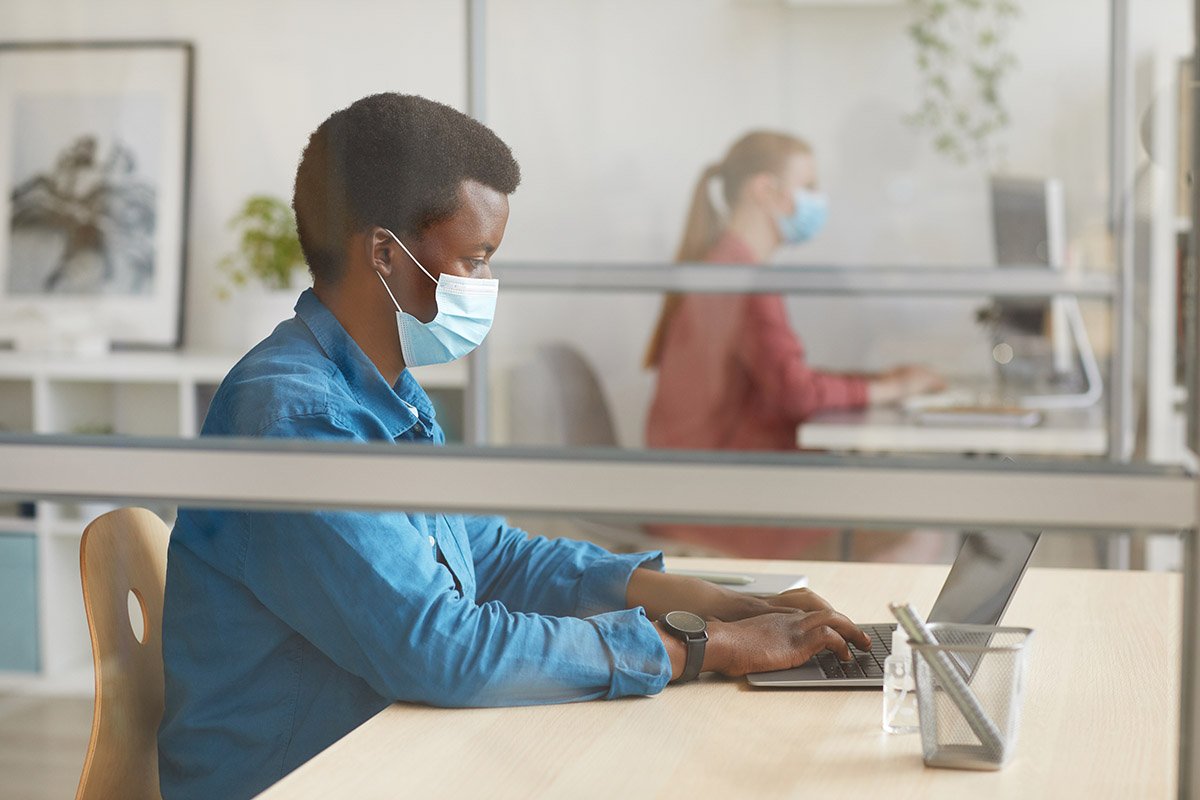8 ways the pandemic turned the JanSan industry upside down
The pandemic changed the world in many ways, and cleanliness standards were no exception. When the COVID-19 pandemic began, most of the world closed its doors. Since then, everything has changed, including the way we do business. In the JanSan industry, means that many companies are reviewing and renewing their cleaning standards to be completely sure that they are doing everything possible to keep their employees and customers safe and calm.
Perhaps most likely, many of the changes that were made to cleanliness standards are likely to last long after the pandemic is over. The arrival of the coronavirus and its aftermath left people thinking more than ever about cleaning their work environments and other public meeting spaces. Thus, the JanSan industry has a responsibility to continue to do everything possible to leave people's concerns behind.

New cleaning standards have been implemented and updated in many parts of the world, with guidance from agencies such as the World Health Organization (WHO) and the Centers for Disease Control and Prevention (CDC) helping to make the path to follow be more confident.
Do you want to know what is new in this? Here we will mention the new ways in which the cleaning industry has adapted to help stop the pandemic from spreading. These 8 cleaning standards of cleanliness are here to stay, and that's a good thing.
1. More frequent cleaning
Perhaps the most important change to janitorial cleaning standards is also the simplest: Clean more frequently. Where most job sites were previously cleaned just once a day, it’s not unusual now to clean specific rooms or areas multiple times in a shift. That’s because the CDC suggests that increasing the frequency of cleaning is one of the most effective ways to help stop the spread of a virus.
And while disinfecting surfaces multiple times per day significantly reduces the risk of exposure to the novel coronavirus, it’s also generally a good practice to prevent other germs that cause serious illnesses such as seasonal influenza. By cleaning more frequently, people will be safer from a number of infections besides just COVID-19.
2. Focus on high-touch areas
Another improvement to most janitorial cleaning standards is the increased focus on high-touch areas. High-touch areas are places that people regularly come in contact with, but which we often take for granted as being clean. The reality is, high-touch areas typically have more germs than other areas. For example, light switches, keyboards, telephones, elevator buttons, sink handles, and many other such places bring a higher risk of contamination than, say, a desk surface. Yet, the latter is usually cleaned daily while the former, in the past, were barely cleaned at all. A greater focus on high-touch areas means better overall hygiene for everyone.

3. EPA-approved disinfectants
The Environmental Protection Agency (EPA) has consistently recommended certain cleaning products based on their effectiveness against infectious agents like MRSA, but now they have a specific list of products capable of fighting COVID-19. These disinfectants work well against not only the coronavirus, but also other infectious diseases that might linger on surfaces or elsewhere in the workplace. Using these will help reduce illnesses across all job sites for both clients and cleaning staff.
4. Electrostatic spraying
One of the more popular janitorial cleaning standards that’s come about is using electrostatic sprayers to disinfect large areas. These sprayers attach a positive charge to disinfectant particles which then stick better to negative particles left on surfaces, meaning that the disinfectant will coat the entire area better and cover more ground. This method of cleaning will undoubtedly remain popular long after COVID-19 is gone.
5. Enhanced ventilation
One bit of CDC guidance that custodial workers should take seriously is the recommendation to enhance ventilation in rooms they’re cleaning. This helps ensure that airborne droplets carrying germs and viruses have a better chance of leaving a room, rather than being inhaled by someone.
This is a much-needed change to janitorial cleaning standards not only because of COVID-19, but also because so many cleaning chemicals can be harmful if someone is exposed to them for too long. With improved ventilation practices, janitorial workers are at a reduced risk of suffering complications associated with exposure to these chemicals.
6. Disinfectant foggers
Similar to electrostatic spraying, disinfectant foggers are designed to cover large areas with disinfectants to help control the spread of infectious diseases. The practice isn’t perfect, and it can take time to complete, but this is yet another way in which the industry has pivoted to meet the needs of better protection against the pandemic. While this equipment wasn't necessarily popular in the pat, many predict that disinfectant foggers will see a rise in popularity beyond COVID-19.
7. Better PPE practices
Personal protective equipment (PPE) has always been an important safety measure for cleaning crews, but now there’s an increased focus on not only using PPE, but using it properly. Masks get more regular wear, and they cover the nose and mouth at all times, which helps prevent inhaling both infectious particles and hazardous cleaning chemicals. Janitorial teams change their gloves frequently and dispose of them in appropriate receptacles. Teams wear gowns and other protective equipment when necessary.
8. More frequent handwashing
Finally, more custodial workers are taking seriously the advice to wash their hands often, or at least use hand sanitizer between jobs. This is probably the best defense against COVID-19 and so many other infectious diseases. Hopefully, with everyone getting into this practice now, it will continue well into the future.
Source: Cleanlink, Double A Solutions

